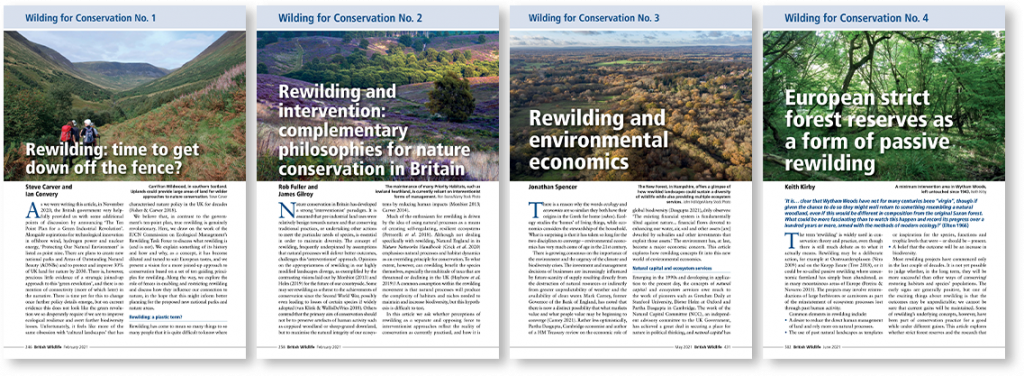The August issue of British Wildlife is now out, marking the completion of the magazine’s 32nd volume and – more notably – the first since its expansion. The increase from six to eight issues per year has allowed more space for articles on the usual eclectic mix of topics from natural history, conservation and environmental policy. With the selection below we hope to give a taste of the variety that readers have enjoyed in recent months – for a full list of previous articles, see the British Wildlife website.

Species: in-depth profiles of individual species or groups have been a mainstay of British Wildlife since its inception. Highlights from this latest volume have included an introduction to the remarkable life histories of cephalopods in British seas; work to unravel the distribution and habitat associations of truly Wild Apples; the myths and misconceptions surrounding pollinating insects; ecological insights from efforts to conserve the Ring Ouzel; and the surprising history of Water Voles in terrestrial habitats.
Places: the magazine continues to celebrate the most important wildlife sites in Britain through regional features and reserve profiles. Recent articles have described work to conserve the botanical treasures of the Lizard, in Cornwall, and the unexpectedly rich biodiversity of conifer plantations in south Wales, while, from East Anglia, we have seen accounts of Holkham NNR – an exemplar of the benefits of large-scale habitat creation and a flexible approach to management – and the contrasting fortunes of two broadland reserves, Sutton and Catfield Fens.
Conservation: British Wildlife aims to tackle current controversies in conservation and shed light on long-term and pervasive threats to the natural environment. Volume 32 has highlighted the potential to eradicate mink from East Anglia and, possibly, from Britain as a whole; the catastrophic impact of nitrogen pollution on bryophytes and lichens; and the environmental impacts of salmon farming in Scotland. On top of this, we have continued to explore the role of rewilding in Britain through the ‘Wilding for Conservation’ series, which most recently has considered the economics of rewilding and lessons from observations of woodland dynamics in European Strict Forest Reserves.

The August issue itself includes articles on the painstaking efforts to save the Pine Hoverfly, one of Britain’s rarest insects; the importance of long-term ecological studies; the potential for biological recording to influence – and help to defeat – planning applications; insights from studies of the Marsh Fritillary butterfly in Cornwall; and the amazing diversity of wildlife recorded at WWT London Wetland Centre during its first 20 years of existence.

And to give a hint of what is to come in volume 33, subscribers can look forward to articles on Humpback Whales in British seas, the significance of climate change in invertebrate declines, the restoration of dynamism to dune systems, and work to protect the critically rare Narrow-headed Ant, along with more from the Wilding for Conservation series, the usual selection of columns, news and features, and much more.
Subscriptions to British Wildlife start from £35 – for more information or to subscribe, visit the website. Individual back issues are available to purchase through the NHBS website.







